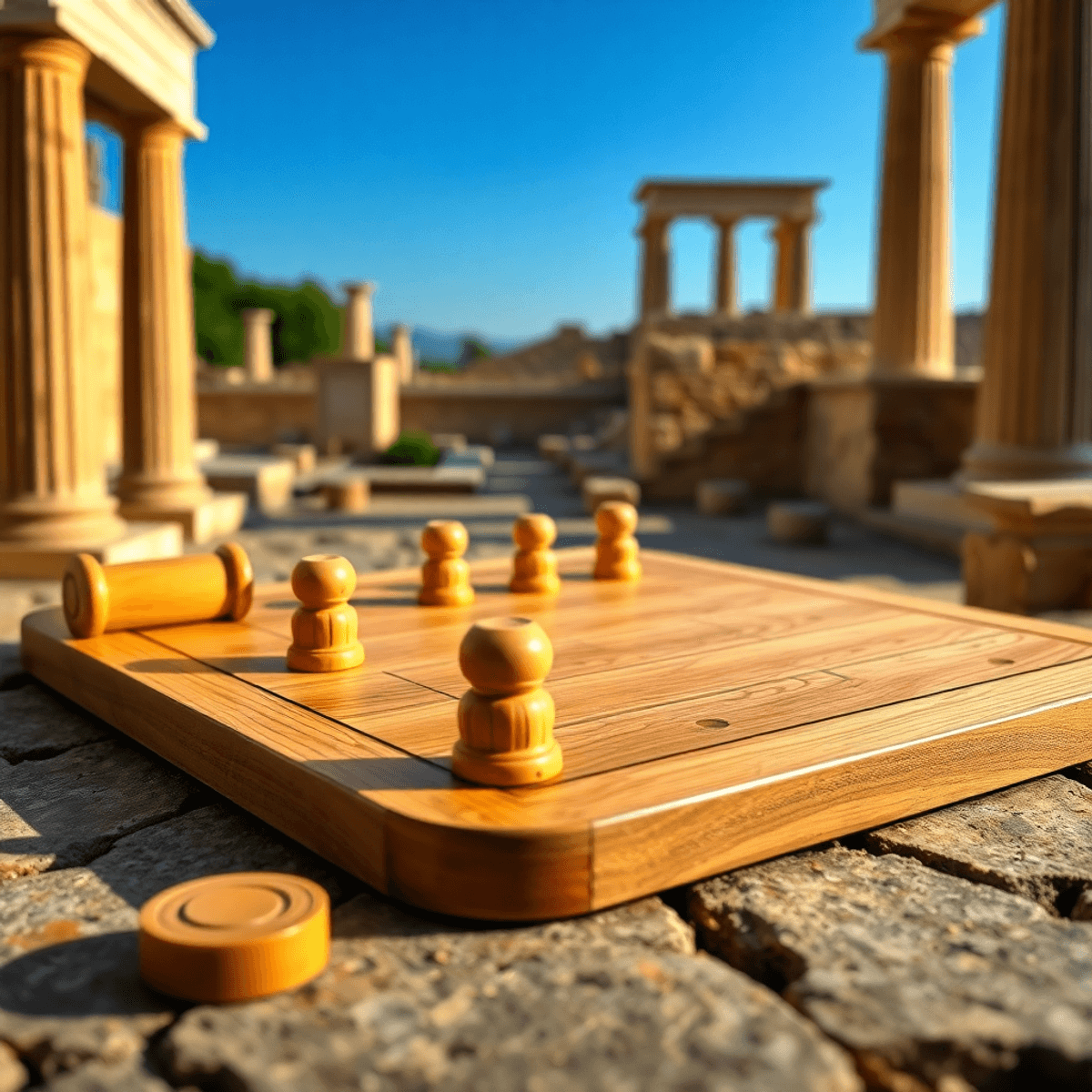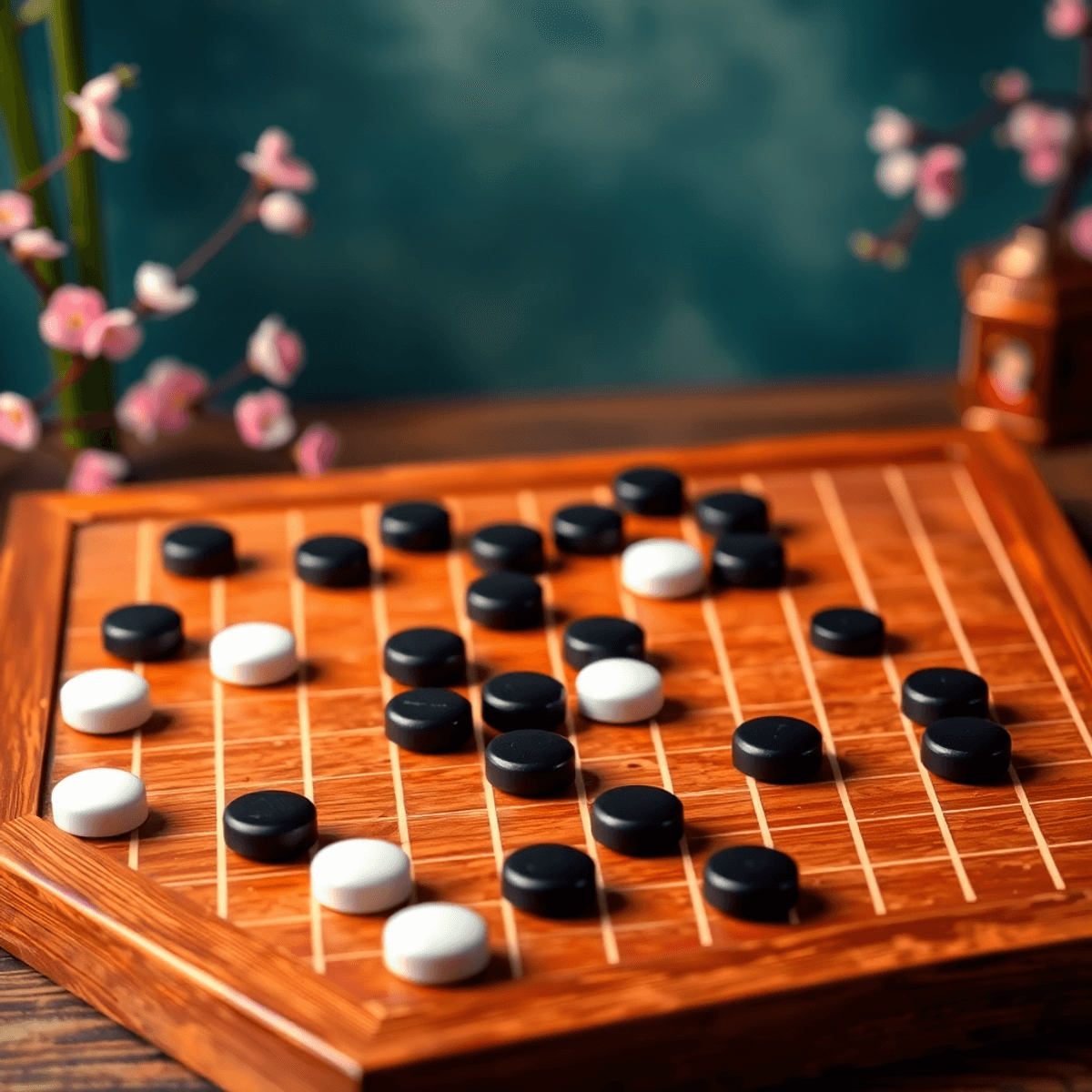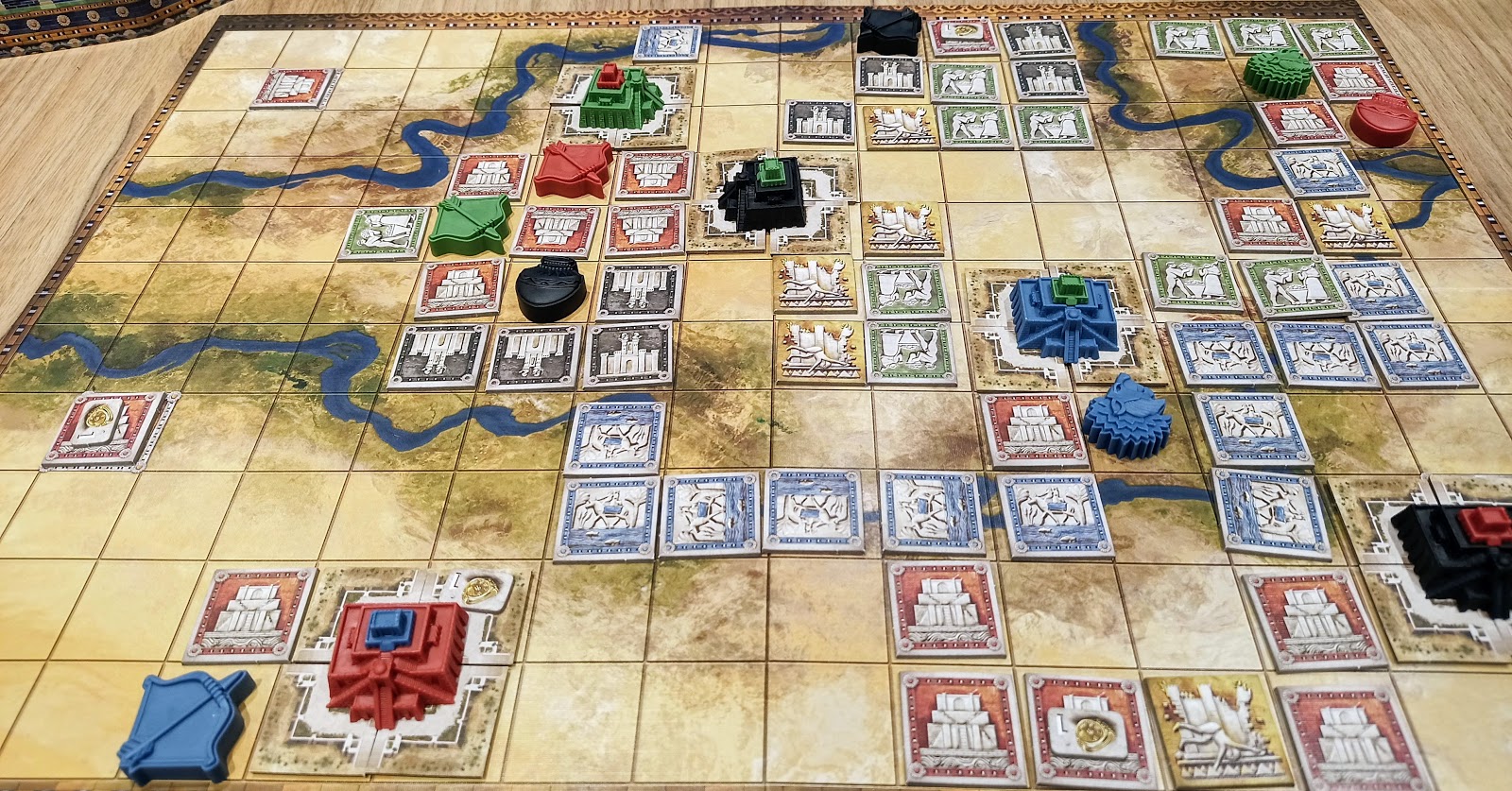
Petteia is an ancient history Greek board game that was popular among people of all social classes. It is believed to be one of the earliest pure strategy games created by humans, played with pieces known as pessoi.
What makes Petteia particularly interesting is that it has no elements of chance, unlike many other ancient games. The gameplay revolves entirely around tactical thinking and strategic planning, similar to modern chess.
We will explore the history of Petteia, its cultural importance in classical Greece, and its impact on the development of strategy gaming. We will examine its references in Homer’s Odyssey, recent archaeological finds, and how this ancient game provides insights into Greek intellectual life and leisure activities.
Early History of Petteia
Petteia is one of the oldest known strategy board games in human history, dating back to at least the 8th century BCE. Archaeological findings that include game boards carved into temple floors and public areas show that people widely played it across ancient Greek territories.
Early References and Cultural Significance
The first recorded mention of Petteia can be found in Homer’s “Odyssey”, where the suitors of Penelope are depicted playing the game while waiting in Odysseus’s palace. This literary reference offers valuable insights into the game’s established presence in Greek society during that time.
Evolution and Variations
During classical antiquity, Petteia evolved from a basic representation of military conflict into a complex strategic pursuit. Archaeological discoveries show that there were different versions of the game with varying board sizes and layouts, such as 5×5 or 11×11 grids. The game spread from Greece to Sicily and Asia Minor, where unique local rules and styles developed.
Intellectual Significance
According to research conducted by the British Museum, by the 5th century BCE, Petteia had become an integral part of Greek intellectual culture. The game components, made from ivory, glass, and precious metals, replaced the original stone pieces.
Gameplay Mechanics of Petteia
The Petteia Rules and Gameplay are centered around strategic capture and control, played on a grid board typically sized 8×8 or 10×10 squares. Players begin with equal numbers of pessoi (game pieces) arranged in opposing rows.

Basic Rules
Basic rules of Petteia include:
- Pieces moved orthogonally (horizontally or vertically)
- No diagonal movements allowed
- Players could move any distance in straight lines
- Jumping over other pieces was prohibited
Objective
The primary objective was to capture enemy pieces through a unique “custodian” method:
A piece was captured when surrounded by two opponent pieces on opposite sides (north-south or east-west)
Game Pieces
Pessoi were commonly crafted from:
- Polished stones
- Ceramic materials
- Glass pieces
- Carved bone or ivory
Strategy
Players needed to balance aggressive tactics with defensive positioning. You had to plan carefully, as pieces could be trapped against the board’s edges or used to create strategic blockades. Unlike other ancient games, Petteia’s pure strategy approach – devoid of chance elements like dice – made it particularly challenging and intellectually stimulating.
Variations and Influence
Archaeological evidence suggests variations in board sizes and starting positions across different Greek city-states, indicating regional adaptations of these basic gameplay mechanics. The game’s sophisticated capture system influenced military training, teaching principles of encirclement and tactical positioning.
This is just one example of the rich tapestry of the history of games, which includes various forms and styles that have evolved over centuries.
Source: Ancient Board Games in Perspective by I.L. Finkel
Cultural Role in Classical Greece
Petteia transcended social boundaries in ancient Greece, serving as a unifying recreational activity across different classes. Archaeological evidence reveals game boards etched into marble benches in public spaces and marketplaces, suggesting its widespread popularity among common citizens.
The game’s intellectual merit caught the attention of prominent Greek philosophers. Plato, in his work “Republic,” drew parallels between Petteia and the art of governance, using it as a metaphor for strategic political thinking. Aristotle referenced the game in his discussions about logic and reasoning, highlighting its value in developing cognitive abilities.
Ancient Greek education systems incorporated Petteia as a teaching tool. Young students learned:
- Tactical analysis
- Pattern recognition
- Forward planning
- Risk assessment
- Decision-making under pressure
Archaeological findings at Greek gymnasiums reveal dedicated spaces for Petteia matches, indicating its role in formal education. The game’s emphasis on strategy aligned with Greek cultural values of wisdom and intellectual prowess, making it a respected pursuit among scholars and military strategists alike.
Source: Ancient Greek Games and Education
Influence on Later Tactical Games
The cultural exchange between Greece and India following Alexander the Great’s campaigns created a fascinating intersection in gaming history. Historical evidence suggests Petteia’s strategic elements influenced the development of early Indian chess variants, particularly in their emphasis on tactical positioning and piece capture methods.
Archaeological findings reveal striking similarities between Petteia’s board layout and early Indian game boards, pointing to potential cross-cultural adaptations. Research by gaming historian H.J.R. Murray suggests that the Greek concept of strategic piece placement significantly shaped the evolution of board games across Asia.
Petteia stands out among ancient games for its pure strategy focus. Unlike popular Roman games such as Ludus Duodecim Scriptorum or Egyptian Senet, which relied heavily on dice rolls, Petteia eliminated chance elements entirely. This distinctive characteristic:
- Emphasized player skill over luck
- Required advanced planning and tactical thinking
- Created a template for future strategy-based games
Modern game theorists have identified Petteia’s influence in various classical board games, from the Persian Shatranj to the Chinese Xiangqi. The game’s sophisticated capture mechanics and emphasis on spatial control continue to resonate in contemporary strategy game design.
This influence is not limited to historical games; it also extends to modern family board games that emphasize strategic thinking and planning. Furthermore, exploring traditional board games from diverse cultures can reveal their significance and the rich traditions behind them, showcasing how deeply rooted these strategic elements are in our global gaming culture.
Rediscovery of Petteia: Recent Findings and Their Significance
Archaeological discoveries in the 21st century have sparked renewed interest in Petteia. A significant 2018 excavation at the ancient city of Ephesus unearthed gaming boards etched into marble slabs, providing tangible evidence of Petteia’s widespread popularity across Greek territories.
Digital reconstruction techniques have allowed archaeologists to analyze game pieces found at various Mediterranean sites. The Journal of Archaeological Science published research revealing that artisans crafted many pessoi from materials like ivory, glass, and precious stones – indicating Petteia’s status as both a common pastime and a luxury item.
Recent academic studies highlight Petteia’s role in Greek military training. A 2020 analysis by the University of Athens suggests that military commanders used the game to teach tactical thinking, with game patterns mirroring actual battle formations.
These findings reshape our understanding of ancient Greek social dynamics:
- Game boards discovered in public spaces indicate widespread accessibility
- Variations in board sizes suggest regional adaptations
- Inscriptions near gaming sites reveal social interactions during play
- Evidence of organized competitions points to Petteia’s role in civic life
The rediscovery of Petteia illuminates the sophistication of ancient Greek leisure activities and their integration into broader social structures.
Conclusion: The Lasting Impact of Petteia in the History of Strategy Games
Petteia’s legacy can be seen throughout the long history of strategy games. Its complex gameplay, which focused on positioning and capturing pieces by surrounding them, set the stage for future strategy games. The game’s emphasis on skill and strategy, without any elements of luck, created a standard that influenced game design in various cultures and time periods.
Petteia’s Influence Beyond Entertainment
Petteia’s impact goes beyond being just a form of entertainment. It represented Greek values of intellectual discipline and strategic thinking, serving as a practical tool for developing critical decision-making abilities. These principles continue to shape modern strategy gaming, where players must anticipate their opponents’ moves, plan several steps ahead, and adjust their tactics based on changing board positions.
The rediscovery of Petteia reveals a direct connection between ancient and modern gaming cultures, showing how basic principles of strategic play have remained surprisingly consistent throughout history.
Further Exploration into Ancient Board Games
Delve deeper into the fascinating world of ancient board games through these authoritative resources:
- “Ancient Board Games in Perspective” by I.L. Finkel – Comprehensive analysis of board games across ancient civilizations
- “Games and Sanctuaries in Ancient Greece” – Scholarly article exploring gaming artifacts found in Greek religious sites
- “Board Games Studies Journal” – Academic publication dedicated to historical game research
- “The Oxford Handbook of Ancient Greek Religion” – Contains sections on gaming in religious and social contexts
- “Ancient Greek Board Games Project” – Digital database of archaeological gaming evidence
These resources provide archaeological evidence, historical context, and scholarly interpretations of Petteia and other ancient games. The combination of academic journals, archaeological reports, and digital archives offers multiple perspectives on ancient gaming culture.
If you’re intrigued by the world of board games beyond the ancient era, you might want to explore contemporary board game collecting. For those looking to start a collection, these essential beginner tips can guide you in finding the best games and strategizing your collection building.
Moreover, if you’re interested in immersing yourself in local board game communities, discovering local board game meetups could lead you to exciting events, clubs, and cafes where you can enjoy great gaming experiences.



